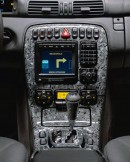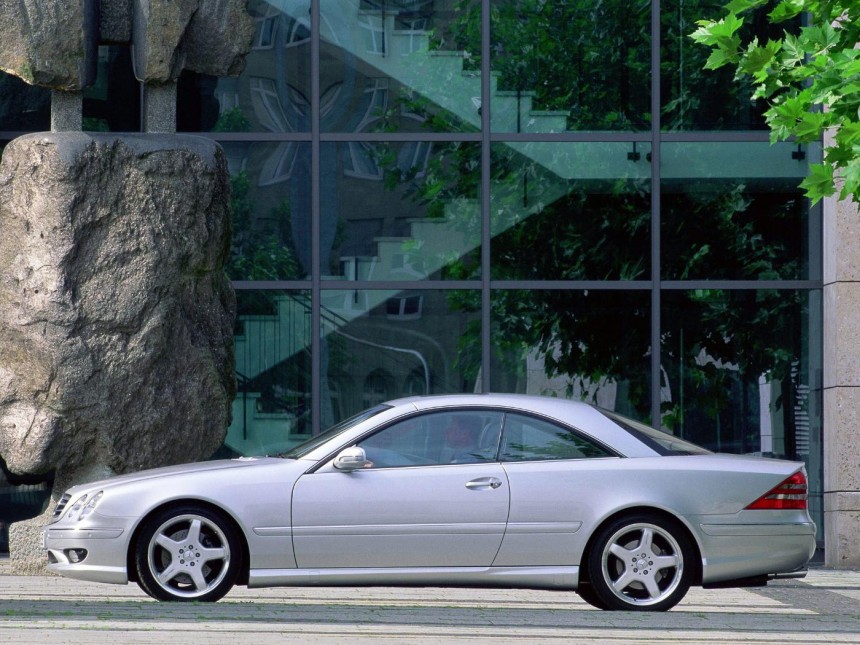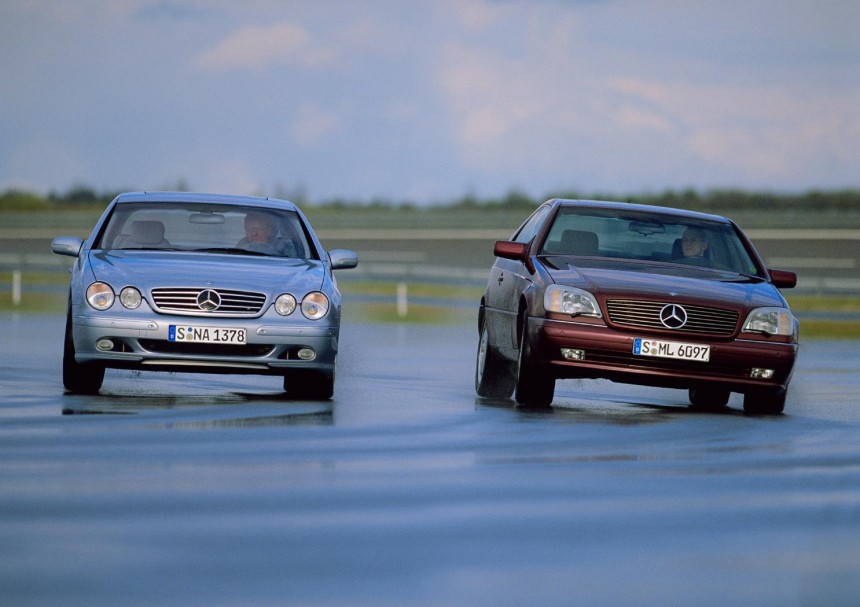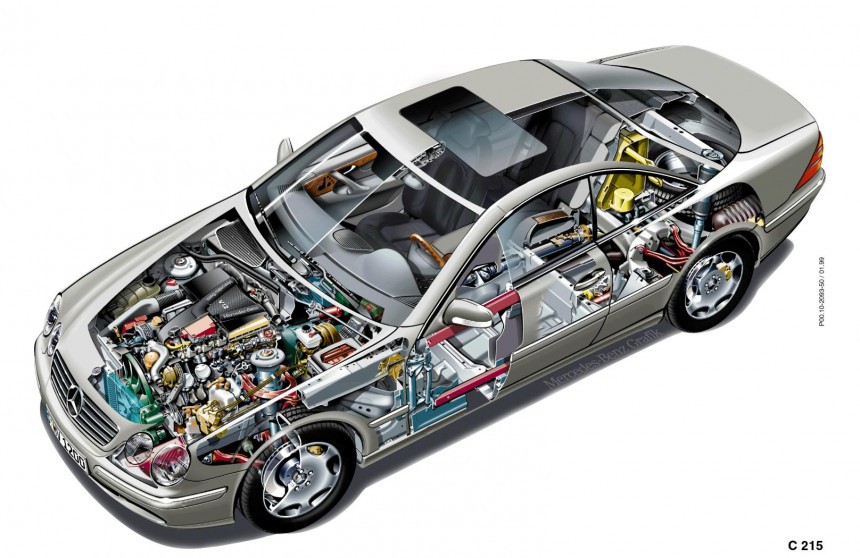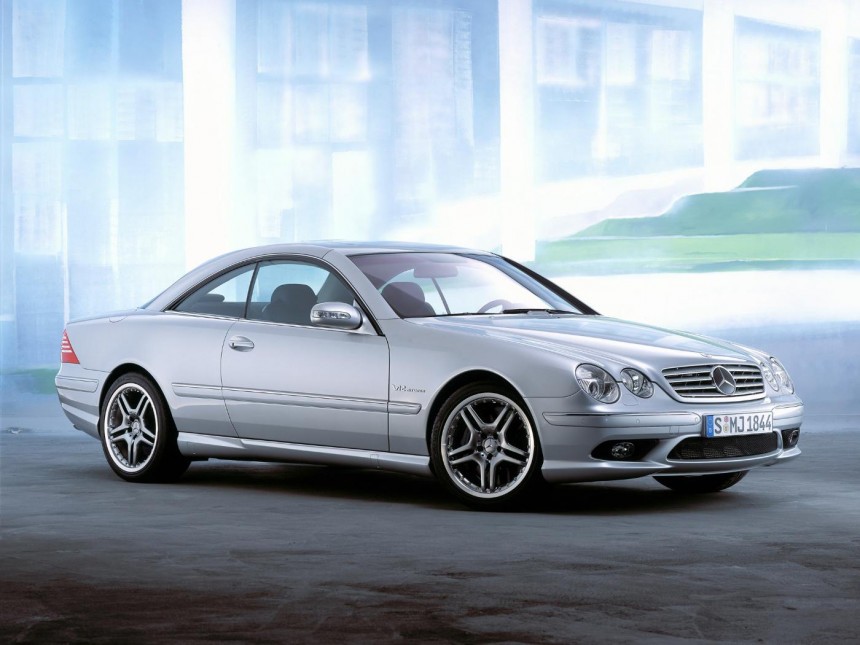According to the Toba Catastrophe Theory, some 70,000 years ago, a supermassive volcanic eruption caused a global volcanic winter of almost ten years and contributed to a 1,000-year-long Earth cooling episode, which led to a genetic bottleneck in humans that left only a few thousand of our ancestors alive.
Proponents of the theory suggest that every human alive today is descending from less than 10,000 people, and our genetic differences may reflect changes within the last 70,000 years instead of a gradual differentiation spanning hundreds of thousands of years.
Of course, this so-called genetic bottleneck is just a theory. Still, if we apply it to cars, particularly Mercedes-Benz, we could say that a similar event happened in the three-pointed star carmaker's history in 1999.
Two major events happened in Stuttgart that year, and their repercussions are still making waves today from some perspectives.
Firstly, after four decades, of which 24 years were spent as the head of design, legendary designer Bruno Sacco retired from Mercedes-Benz.
Secondly, while the final model whose design got his approval was the SL (R230), it was the CL (C215) super coupe that was the last ever Mercedes-Benz to come out of Stuttgart with Bruno Sacco still presiding over the entire design direction of the company.
At the time, the CL was the most expensive Mercedes-Benz model in the lineup, and it represented a clear departure from its predecessors in design and technology.
For decades before it, the sign of a truly classy coupe was represented, among other minor things, by the absence of a B-pillar in the middle of the car. Like its predecessors, the CL (C215) side windows were not interrupted by a ghastly B-pillar, thus featuring a dose of elegance that made it the epitome of luxury and sophistication in the carmaker's stable.
The design of the C215 was a significant evolution from its predecessor, personifying a shift toward a more streamlined and modern aesthetic in the Mercedes-Benz design language. It featured a sleek, low-profile, elegant, more aerodynamically efficient silhouette, departing from the monolithic design of the C140, whose facelift was the first Mercedes to wear the 'CL' designation.
The iconic Mercedes-Benz so-called 'coupe grille,' with the larger three-pointed star adorning the middle, dominated the model's front end and was flanked by distinctive four oval headlamps, which became a signature look for the brand in the following years.
Apart from the lack of a B-pillar, another design feature harking back to past Mercedes coupes was the rear window, whose reverse angle was first seen on 1960s models.
The dimensions of the C215's body were much reduced compared to its predecessor, the C140, being 72 millimeters shorter, 55 millimeters narrower, and 54 millimeters lower, with a wheelbase that was 60 millimeters shorter. Despite these reductions, the interior space maintained the luxurious standards of its segment, with enough room for four adult passengers.
Even though luxury for Mercedes-Benz and other legacy carmakers had always revolved around acres of leather and wood veneers, the 'four-eyed' CL was the first one to try something completely different.
As part of the Designo customization program, customers could even choose a stone trim for the interior of the luxurious coupe. This odd customization solution has since appeared on Bentleys with Mulliner specification a few years back, but almost 25 years ago, it was something never before seen.
Starting with literal blocks of granite, artisans then cut them into wafer-thin sheets, which were then finished and shaped as necessary to replace what was usually wood veneer on the dashboard and the doors.
Two finishes were available, one called designo Labrador Blue Pearl and the other designo Black Star Galaxy, and the customization option then trickled down to the SL Roadster (R230) and the S-Class sedan, or the CL's platform and drivetrain donor.
A focus on lightweight construction, utilizing materials such as high-strength steel, aluminum, magnesium, and plastic, allowed the CL (C140) to shed an astonishing 750 lbs (340 kg) of weight compared to its enormous predecessor, the C140.
Now, that doesn't mean this was a featherweight sports car, as it still weighed almost as much as two Mazda Miatas, but the straight-line performance and comfort were the most you could expect from a Mercedes. And no, the stone trim wasn't responsible for the huge mass of the car, as the granite veneers were only millimeters thick.
Among the world's firsts that appeared on Bruno Sacco's Magnum Opus you can find things like bi-xenon headlights and a unique door hinge with four joints for each of the two giant doors, making them use less space when opened.
That said, what was the model's greatest technological innovation was the Active Body Control (ABC) system, which was a suspension that combined 200-bar high-pressure hydraulics with new sensors and controls in the quest to minimize the roll and pitch of the car during more dynamic maneuvers.
Initially shown on a concept car three years before the CL (C215) went on sale, ABC was a groundbreaking feature that shook the luxury segment and which Mercedes-Benz still uses in a much more advanced version today on its high-end models.
Although it was based on a shortened S-Class (W220) platform and underneath the differently sculpted sheet metal, the two models were nearly identical, the CL's engine lineup was restricted to the most powerful powertrains.
The 'base' and most popular version was the CL 500, powered by a naturally aspirated 5-liter V8, while those who wanted la creme de la creme were at first greeted by a naturally aspirated, 5.8-liter V12 in the CL 600, and then a twin-turbo 5.50liter one after the facelift in 2002.
Oddly enough, the number of AMG powertrains that were officially part of the CL (C215) lineup at one point or another was much higher. Depending on the year, you could get a CL 55 AMG with a naturally aspirated 5.4-liter V8 or a supercharged version of the same engine on the facelift model.
A lot rarer were the V12 AMGs, with the rarest one being the CL 63 AMG, powered by a naturally aspirated 6.3-liter twelve-cylinder, of which only a few dozen were ever built. The facelift received the CL 65 AMG, where the twin-turbo 6.0-liter V12 debuted and had its torque restricted to 738 lb-ft (1,000 Nm).
Because it was such a specialty model, the total production of the CL (C215) consisted of 48,010 units in 7 years, including the super rare CL 63 AMG version, of which only 26 are known to exist. Over 32,000 of them were the CL 500 version.
Of course, this so-called genetic bottleneck is just a theory. Still, if we apply it to cars, particularly Mercedes-Benz, we could say that a similar event happened in the three-pointed star carmaker's history in 1999.
Two major events happened in Stuttgart that year, and their repercussions are still making waves today from some perspectives.
Firstly, after four decades, of which 24 years were spent as the head of design, legendary designer Bruno Sacco retired from Mercedes-Benz.
Secondly, while the final model whose design got his approval was the SL (R230), it was the CL (C215) super coupe that was the last ever Mercedes-Benz to come out of Stuttgart with Bruno Sacco still presiding over the entire design direction of the company.
At the time, the CL was the most expensive Mercedes-Benz model in the lineup, and it represented a clear departure from its predecessors in design and technology.
No B-pillar, the Symbol of Luxury
The design of the C215 was a significant evolution from its predecessor, personifying a shift toward a more streamlined and modern aesthetic in the Mercedes-Benz design language. It featured a sleek, low-profile, elegant, more aerodynamically efficient silhouette, departing from the monolithic design of the C140, whose facelift was the first Mercedes to wear the 'CL' designation.
The iconic Mercedes-Benz so-called 'coupe grille,' with the larger three-pointed star adorning the middle, dominated the model's front end and was flanked by distinctive four oval headlamps, which became a signature look for the brand in the following years.
Apart from the lack of a B-pillar, another design feature harking back to past Mercedes coupes was the rear window, whose reverse angle was first seen on 1960s models.
Even though luxury for Mercedes-Benz and other legacy carmakers had always revolved around acres of leather and wood veneers, the 'four-eyed' CL was the first one to try something completely different.
As part of the Designo customization program, customers could even choose a stone trim for the interior of the luxurious coupe. This odd customization solution has since appeared on Bentleys with Mulliner specification a few years back, but almost 25 years ago, it was something never before seen.
Starting with literal blocks of granite, artisans then cut them into wafer-thin sheets, which were then finished and shaped as necessary to replace what was usually wood veneer on the dashboard and the doors.
Two finishes were available, one called designo Labrador Blue Pearl and the other designo Black Star Galaxy, and the customization option then trickled down to the SL Roadster (R230) and the S-Class sedan, or the CL's platform and drivetrain donor.
Technological Tour de Force
Now, that doesn't mean this was a featherweight sports car, as it still weighed almost as much as two Mazda Miatas, but the straight-line performance and comfort were the most you could expect from a Mercedes. And no, the stone trim wasn't responsible for the huge mass of the car, as the granite veneers were only millimeters thick.
Among the world's firsts that appeared on Bruno Sacco's Magnum Opus you can find things like bi-xenon headlights and a unique door hinge with four joints for each of the two giant doors, making them use less space when opened.
That said, what was the model's greatest technological innovation was the Active Body Control (ABC) system, which was a suspension that combined 200-bar high-pressure hydraulics with new sensors and controls in the quest to minimize the roll and pitch of the car during more dynamic maneuvers.
Initially shown on a concept car three years before the CL (C215) went on sale, ABC was a groundbreaking feature that shook the luxury segment and which Mercedes-Benz still uses in a much more advanced version today on its high-end models.
The 'base' and most popular version was the CL 500, powered by a naturally aspirated 5-liter V8, while those who wanted la creme de la creme were at first greeted by a naturally aspirated, 5.8-liter V12 in the CL 600, and then a twin-turbo 5.50liter one after the facelift in 2002.
Oddly enough, the number of AMG powertrains that were officially part of the CL (C215) lineup at one point or another was much higher. Depending on the year, you could get a CL 55 AMG with a naturally aspirated 5.4-liter V8 or a supercharged version of the same engine on the facelift model.
A lot rarer were the V12 AMGs, with the rarest one being the CL 63 AMG, powered by a naturally aspirated 6.3-liter twelve-cylinder, of which only a few dozen were ever built. The facelift received the CL 65 AMG, where the twin-turbo 6.0-liter V12 debuted and had its torque restricted to 738 lb-ft (1,000 Nm).
Because it was such a specialty model, the total production of the CL (C215) consisted of 48,010 units in 7 years, including the super rare CL 63 AMG version, of which only 26 are known to exist. Over 32,000 of them were the CL 500 version.































